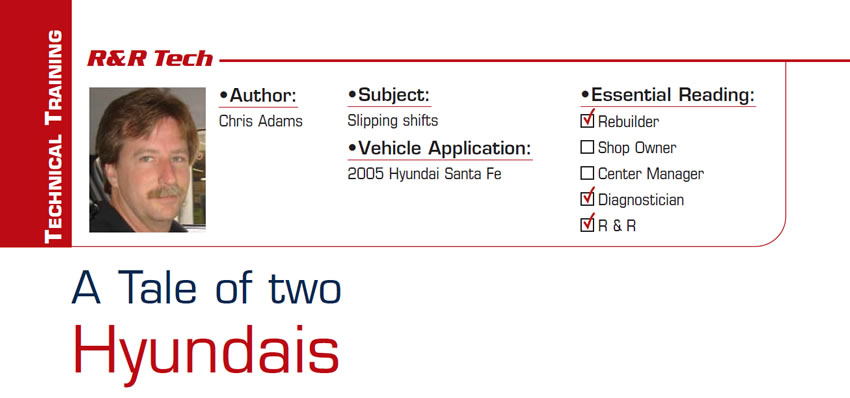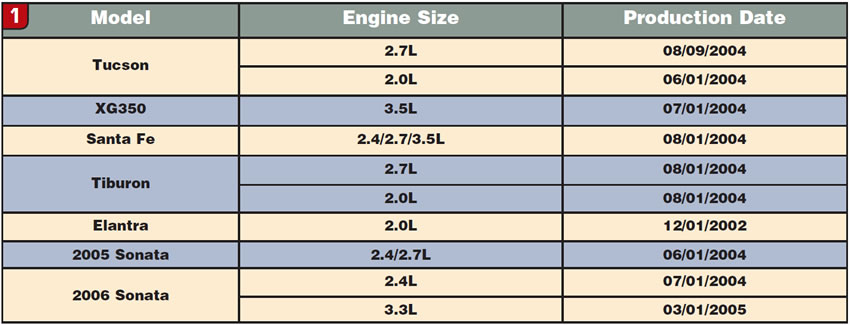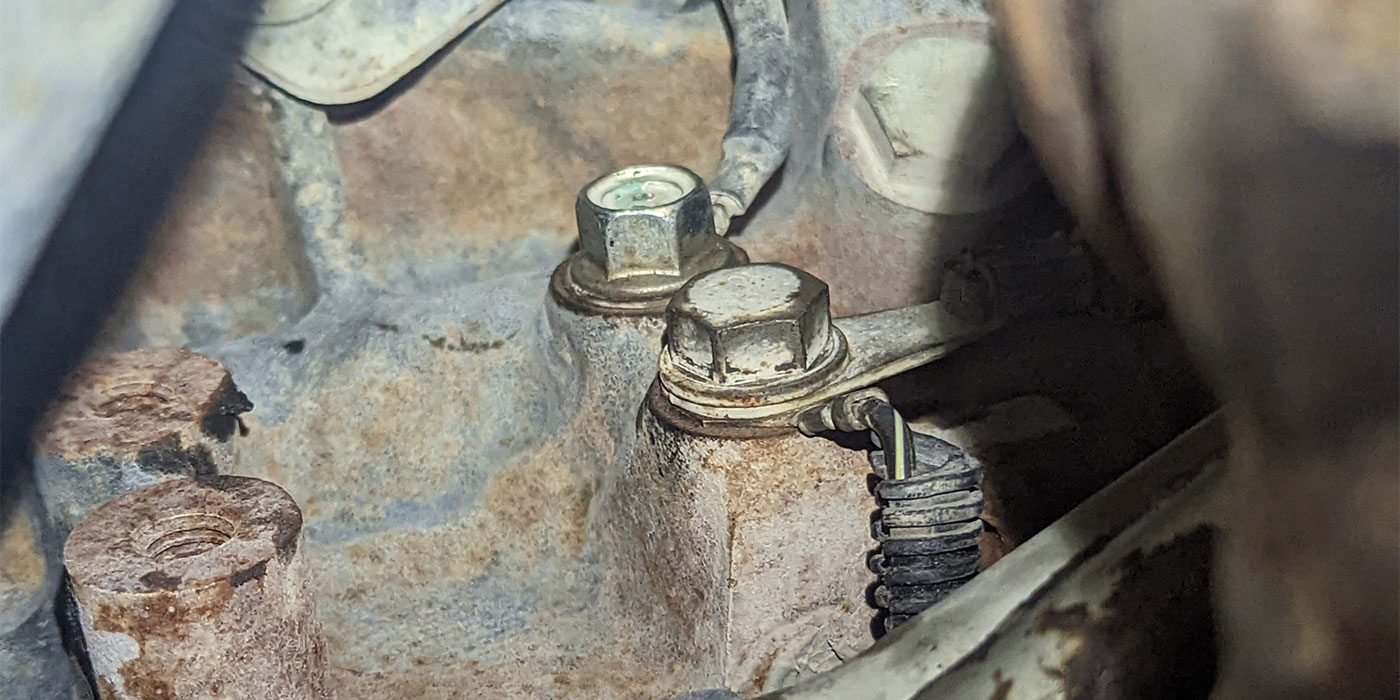
R&R Tech
- Subject: Slipping shifts
- Vehicle Application: 2005 Hyundai Santa Fe
- Essential Reading: Rebuilder, Diagnostician, R & R
- Author: Chris Adams
We recently received a call from one of our wholesale customers that had bought a carry-out transmission for a 2005 Hyundai Santa Fe. The vehicle had been out for a few months and was returned to the installer with a complaint of slipping shifts. Our customer had driven the vehicle and verified the complaint, removed the transmission and called us to send a replacement. At this point with the transmission already removed there was not much we could check so we sent out a replacement transmission.
The following day we received a phone call from the installer that the replacement transmission “was doing the same thing,” so at this point we told them that we had to get the vehicle to our store to figure out what was going on.
When I first test-drove the vehicle it flared badly on the 2-3, 3-4 and 4-5 and had harsh downshifts. It felt as if it just had not completed its relearn procedure, and after several miles of driving it did start shifting better. I wanted to make sure that it was not a heat-related issue, so I disconnected the battery cables and tied them together for several minutes to clear the adaptive memory.
In the first part of the second test drive, the transmission was shifting very poorly just as when I first drove the vehicle. It took nearly 30 minutes of driving to get all the shifts adapts relearned, and the transmission was working properly again.
When we were finished and the installing shop made it out to pick up the Hyundai, it had sat at our shop over the weekend, which leads us to why the Hyundai had come back in the first place. The battery was completely dead; the combination of a bad battery and a GPS that was left on under the seat had completely drained the battery.

The customer did not tell the installer that the vehicle had to be jump-started right before the problem occurred. We installed a new battery and went through the 30-minute test drive and relearn procedure again, and all was returned to normal.
About two weeks after the first one, another 2005 Hyundai made it into our shop slipping in 3rd and 4th gears, and with burnt fluid and gear-ratio-error codes. We sold and installed one of our remanufactured transmissions, and on the initial test drive it had very harsh upshifts into 3rd and 4th. We had the battery disconnected during the R&R but we did have a battery memory saver installed to save the presets, so I figured that the transmission adapts had not cleared. I disconnected the battery cables and tied them together for several minutes, and the vehicle still shifted harshly and did not seem to come out of it, so I repeated this procedure and left it for almost an hour, with the same result.
After some additional research, I read through the TSBs for this vehicle again and there were four TSBs. All of them were related to relearn and reset of transmission adapts.
I read the first two TSBs initially when the first Hyundai had come in, and they were almost identical so I did not bother reading the others. That was my mistake. The fourth TSB had the following statement: “The transaxle controller adaptive values are downloaded to the controller EPROM when the ignition key is turned OFF, then uploaded when the ignition key is turned ON.” For this reason, the adaptive values cannot be reset by disconnecting the battery cable.
The Hi-Scan Pro must be used on vehicles built after the dates shown in Figure 1 to reset the adaptive values to provide smooth shifts after the following repairs:
- Replacement of automatic transaxle
- Reprogramming of transaxle control module (TCM).

This particular Hyundai was built after 08/01/2004 (Figure 1), which explains why the adapts would not clear with a battery disconnect. Since we did not have a scan tool with the ability to reset the adapts, we had to take it to a dealer to have the reset procedure done. After that and a lengthy test drive everything was operating normally again.
All manufacturers are different, and even the same car can have different procedures for resetting and relearning transmission adapts; know what you are working on and use the information available to you.














